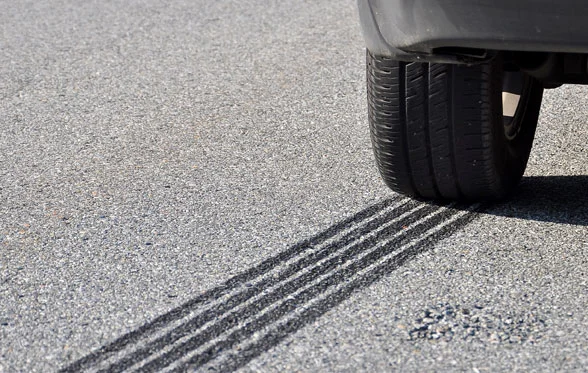Since they were originally introduced in the 1970s, the European legal requirements on light duty vehicle emissions have always been based on tests in a dedicated emissions laboratory under controlled conditions, with the vehicle being driven on a chassis dynamometer and following a specified drive cycle. Although there have been some revisions to the drive cycle and the applicable emissions limits have been gradually reduced over time, notably the Euro 1 to Euro 6 limits that were introduced between 1992 and 2014, the basic emissions testing format has remained the same. However, this is likely to change in the near future with the addition of real driving emissions (RDE) tests where the vehicle is driven on real roads, under real world driving conditions with the vehicle's exhaust emissions being measured by a portable emissions measurement system (PEMS) that is small and light enough to be fitted to the vehicle without it affecting the vehicle's performance.
For some time, the European Commission has suspected that the most recent reductions in the emissions limits applicable to light duty vehicles, especially those relating to the emission of nitrogen oxides (NOx) from diesel engined vehicles, have not translated into real world improvements in air quality. In recognition of this, EC Regulation No. 715/2007, which introduced the Euro 5 and Euro 6 emissions limits, included the following clause:
"The Commission should keep under review the need to revise the New European Drive Cycle as the test procedure that provides the basis of EC type approval emissions regulations. Updating or replacement of the test cycles may be required to reflect changes in vehicle specification and driver behaviour. Revisions may be necessary to ensure that real world emissions correspond to those measured at type approval. The use of portable emission measurement systems and the introduction of the "not-to-exceed" regulatory concept should also be considered."
A number of recent studies into the real world emissions performance of light duty vehicles have confirmed the discrepancy between the NOx emissions measured at type approval and those measured during normal vehicle operation. For one of these studies, undertaken by the International Council on Clean Transportation (ICCT), 15 diesel engined passenger cars that were certified to the Euro 6 and/or US Tier 2 / Bin 5 requirements were subjected to PEMS testing. The results of this testing showed that, on average, the real world NOx emissions from these vehicles were about seven times higher than the Euro 6 limit.
The issue of real world NOx emissions from light duty vehicles has also gained political momentum recently due to the number of European cities that are currently failing to meet the European Union air quality standards on nitrogen dioxide, which is mainly being attributed to the greater uptake of diesel engined passenger cars.
In recent months, the European Commission have held numerous meetings with representatives from the EU Member States and other stakeholders to develop the legislative text that will allow RDE and PEMS testing to be incorporated into the EU Regulation on light duty vehicle emissions. The necessary revisions to the light duty emissions Regulation will be introduced in two separate sets of amendments. The first set of amendments will introduce the RDE test procedures and associated specifications, and the second set of amendments will introduce the emissions limits that will be applicable for RDE testing, referred to as not to exceed (NTE) values.
At the Technical Committee - Motor Vehicles (TCMV) meeting held in Brussels on 24th November 2014, the European Commission presented a draft version of the first set of amendments which included:
- Specifications for the route to be used to RDE testing.
- Requirements on the selection of test vehicles for RDE testing.
- Specifications and calibration methods for the PEMS equipment.
- Requirements on the emissions measurement procedure and on the interpretation of the results.
This draft will be further developed in the coming months, and it is the European Commission's intention to have it ready for final adoption by the TCMV early in 2015. Drafting of the second set of amendments has already begun and it the European Commission's intention to have these ready for final adoption by the middle of 2015.
With regard to introduction dates, the European Commission are proposing that RDE testing will become mandatory for new types of vehicle from 1st September 2017. However, the European Commission are also proposing that vehicle manufacturers will have to carry out RDE testing on all vehicles first type approved after the entry into force of the first set of amendments. For such testing, the vehicles will not be required to comply with the NTE values, but the vehicle manufacturer must make the results from these tests publicly available.
